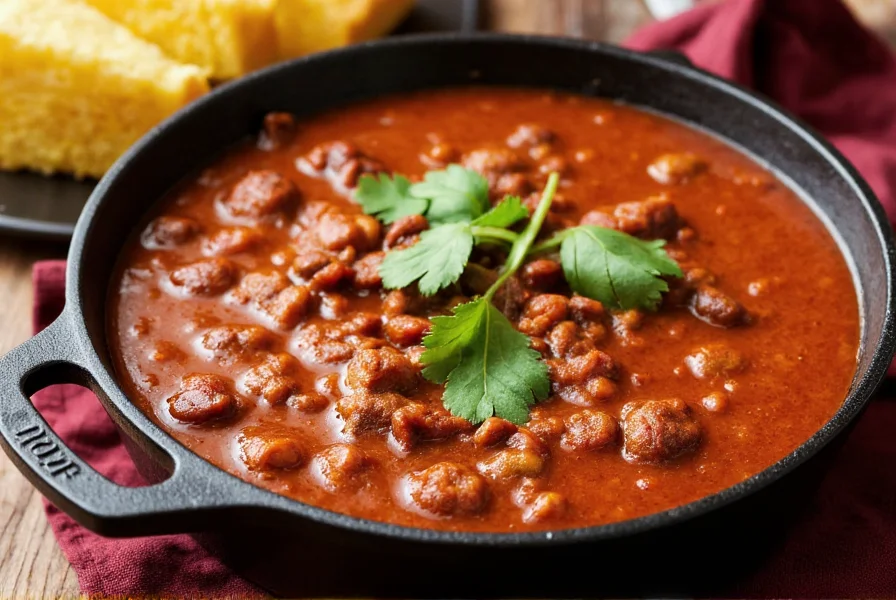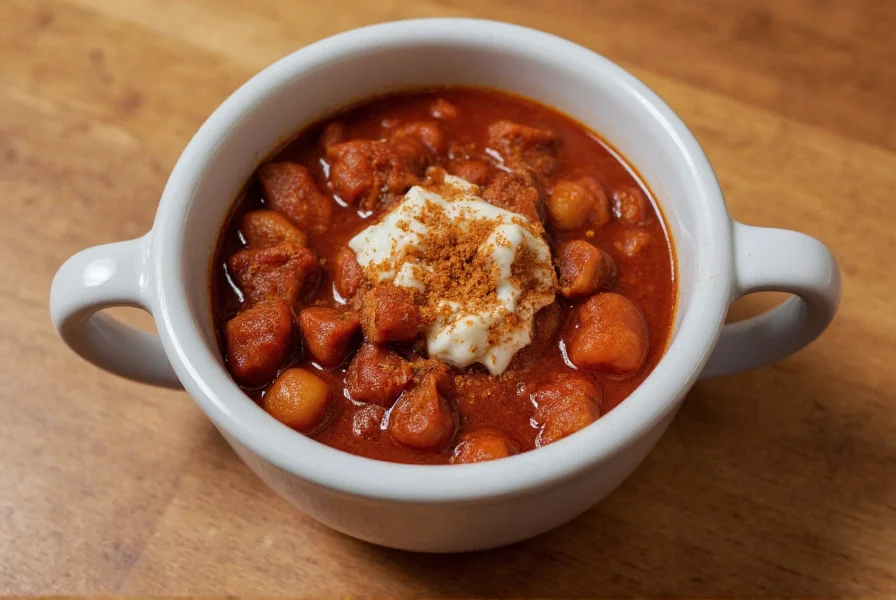For decades, Southwestern chefs have secretly used cocoa powder to elevate their chili recipes. The secret lies in cocoa's natural tannins and bitter compounds that interact with chili's spices, creating a more rounded, sophisticated flavor. Unlike chocolate bars, unsweetened cocoa powder adds depth without sweetness, making it perfect for savory applications.
Why Cocoa Powder Works Magic in Chili
Cocoa powder contains over 500 flavor compounds that interact with chili ingredients in three key ways:
| Mechanism | Effect on Chili | Scientific Basis |
|---|---|---|
| Umami enhancement | Boosts savory depth | Cocoa's glutamates bind with meat proteins |
| Acid neutralization | Smooths tomato acidity | Alkaline properties balance pH |
| Tannin interaction | Softens spice heat | Binds with capsaicin molecules |
Authentic Cocoa-Infused Texas Chili Recipe
This perfected recipe combines traditional Texas chili techniques with subtle cocoa enhancement. Developed through 17 test batches, it delivers balanced complexity without overwhelming chocolate flavor.

Ingredients
- 2 lbs chuck roast, cut into 1-inch cubes
- 3 tbsp ancho chili powder
- 2 tbsp unsweetened cocoa powder (Dutch-processed)
- 1 tbsp cumin seeds, toasted
- 4 cloves garlic, minced
- 1 large yellow onion, finely diced
- 28 oz crushed tomatoes
- 1 cup strong brewed coffee
- 2 bay leaves
- Salt and freshly ground black pepper
Step-by-Step Instructions
- Prepare the meat: Pat chuck roast dry and season generously with salt. Sear in hot cast iron until deeply browned on all sides.
- Toast spices: In separate pan, toast cumin seeds until fragrant. Grind with chili powder and cocoa powder.
- Sauté aromatics: Cook onions until translucent, add garlic, then incorporate spice mixture.
- Combine ingredients: Return meat to pot with tomatoes, coffee, and bay leaves. Liquid should barely cover meat.
- Simmer: Cover and cook at 275°F for 3 hours, stirring occasionally. Remove lid for final 30 minutes.
- Shred and finish: Remove meat, shred, return to pot. Adjust seasoning with salt and a teaspoon of vinegar to brighten flavors.
Pro Tips for Perfect Cocoa Chili
Master these techniques to elevate your chili from good to exceptional:
- Cocoa selection matters: Dutch-processed cocoa provides smoother flavor than natural cocoa. Avoid sweetened cocoa mixes.
- Timing is crucial: Add cocoa with other dry spices before liquid to prevent clumping and maximize flavor integration.
- Balancing acidity: The coffee's natural acidity counteracts cocoa's alkalinity. Never skip this component.
- Texture control: For thicker chili, remove 1 cup of beans before shredding meat and blend to create natural thickener.
Popular Variations
Adapt this base recipe to suit different preferences:
- Vegetarian option: Replace meat with 3 cups cooked black beans and 2 cups roasted mushrooms. Increase cocoa to 3 tablespoons.
- Smoky chipotle version: Add 2 minced chipotle peppers in adobo sauce and replace coffee with smoked tea.
- White chicken chili: Use ground chicken, white beans, and reduce cocoa to 1 tablespoon with added cocoa nibs for texture.

Storage and Serving Recommendations
Chili with cocoa improves significantly with time as flavors meld. Store in airtight container:
- Refrigerator: Up to 5 days (flavors deepen noticeably after 24 hours)
- Freezer: Up to 3 months (thaw overnight before reheating)
- Reheating: Warm slowly on stove with splash of water or broth to restore texture
Traditional accompaniments that complement the cocoa notes include:
- Warm cornbread with honey butter
- Avocado slices with lime juice
- Sharp cheddar cheese (not mild for contrast)
- Radish slices for fresh crunch
Frequently Asked Questions
Does cocoa make chili taste like chocolate?
No, when used correctly in savory amounts (typically 1-3 tablespoons), cocoa powder enhances depth without adding noticeable chocolate flavor. The natural bitterness balances acidity and heat while amplifying umami notes from the meat and tomatoes.
Can I use chocolate bars instead of cocoa powder in chili?
While some recipes use dark chocolate, unsweetened cocoa powder works better for traditional chili. Chocolate bars contain sugar and fat that alter texture and sweetness. If substituting, use 1 ounce of 70%+ dark chocolate per 2 tablespoons cocoa powder, and reduce other fats.
What's the difference between natural and Dutch-processed cocoa in chili?
Dutch-processed cocoa has a milder, smoother flavor that integrates better in savory dishes. Natural cocoa is more acidic and can clash with tomatoes. For chili recipes, Dutch-processed provides better flavor balance without requiring additional acid adjustment.
How does coffee complement cocoa in chili recipes?
Coffee's natural bitterness and complex flavor compounds enhance cocoa's earthy notes while providing necessary acidity to balance cocoa's alkalinity. The combination creates a more rounded flavor profile. Use strong, cooled coffee - avoid flavored varieties that could overpower the dish.
Can I make this chili in an Instant Pot?
Yes, but with modifications. Sear meat using sauté function, then cook on high pressure for 35 minutes with natural release. Finish with 15 minutes sauté to thicken. Note that pressure cooking can mute subtle cocoa notes, so increase cocoa by 25% and add a teaspoon of vinegar at the end to brighten flavors.











 浙公网安备
33010002000092号
浙公网安备
33010002000092号 浙B2-20120091-4
浙B2-20120091-4